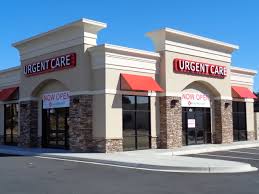The last few blog posts have focused on primary care but today we’ll look at two other options for care – urgent care and retail clinics. These alternatives have become very popular over the past 10 years, driven in large part by patients’ frustration with primary care. Here’s some brief background on the two:
Urgent Care Centers (UCC)
UCCs bridge the gap between primary care and the emergency room. They’re open on evenings and weekends, appealing to patients who can’t get same-day appointments with their primary care physicians, need medical care outside of normal office hours, or don’t have regular primary care physicians. UCCs are primarily staffed by physicians trained in family medicine, nurse practitioners and physician assistants, and about half of all centers are physician-owned. There are roughly 7,100 urgent care centers in the U.S.
Retail Clinics
These small medical clinics in convenient locations (e.g., Walgreens) offer quick, inexpensive, protocol-based care for limited medical conditions, such as strep throat, minor burns, and vaccinations. Patients who present with urgent or more complicated conditions are referred to EDs, UCCs, or a local physician. Most retail clinics are staffed by nurse practitioners, although some employ physician assistants and physicians. The number of retail clinics nationwide has grown rapidly from 351 in 2006 to 2,805 in 2015.
Retail clinics see less acute medical cases than UCCs. They usually have a list of conditions they treat and services offered, often with inexpensive, upfront pricing. Need a tetanus shot, or treatment for strep throat? They’ve got you covered. Having an exacerbation of heart failure? Not the place to go. UCCs can handle most medical issues and often have x-ray machines and CT scanners on-site for quick testing. Insurance coverage for urgent care varies but the cost to the patient is usually higher than for primary care, but less than for the emergency room. Keep in mind that UCCs and retail clinics aren’t equipped to deal with trauma or true medical emergencies so when your grandma breaks a hip playing Pokemon Go don’t drop her off at the local CVS.
What’s The Difference?
The primary benefit of UCCs and retail clinics is ease of access. Having a problem on a Sunday? 20 years ago, your only option was to go the Emergency Department, where’d you would likely wait for hours and then get stuck with a huge bill. These days, even if you do come down with something during business hours, you’ll probably have to wait a day or longer to get in with your primary care doctor. It’s much easier to drive around the corner to the local UCC or retail clinic where the wait is usually less than an hour, and testing and treatment are quick.
In general, retail clinics and UCCs do not offer preventive care and chronic disease management. You’ll need to visit a primary care doctor to get screened for breast and colon cancer, and to have your high blood pressure and diabetes managed. Employees at UCCs and retail clinics usually are scheduled on shifts, so if you visit the same UCC 3 days in a row you’re likely to see 3 different physicians (and have to explain your story 3 different times), whereas primary care allows the patient and physician to get to know each other and develop a relationship over time.
Unfortunately, more and more people are relying on UCCs and retail clinics for all of their health needs, which does not provide comprehensive medical care and puts them at risk for serious problems that can be prevented. We’ll discuss this further in a post next month.
